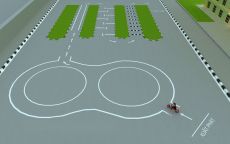A desert is a hostile, potentially deadly environment for unprepared humans. In hot deserts, high temperatures cause rapid loss of water due to sweating, and the absence of water sources with which to replenish it can result in dehydration and death within a few days. In addition, unprotected humans are also at risk from heatstroke. Humans may also have to adapt to sandstorms in some deserts, not just in their adverse effects on respiratory systems and eyes, but also in their potentially harmful effects on equipment such as filters, vehicles and communication equipment. Sandstorms can last for hours, sometimes even days. Despite this, some cultures have made hot deserts 'their home for thousands of years, including the Bedouin, Tuareg tribe, and Pueblo people. Modern technology, including advanced irrigation systems, desalinization and air conditioning, has made deserts much more hospitable. In the United States and Israel for example, desert farming has found extensive use. In cold deserts, hypothermia and frostbite are the chief hazards, as well as dehydration in the absence of a source of heat to melt ice for drinking. Falling through pack-ice or surface ice layers into freezing water is a particular danger requiring emergency action to prevent rapid hypothermia. Starvation is also a hazard; in low temperatures the body requires much more food energy to maintain body heat and to move. As with hot deserts, some people such as the Inuit have adapted to the harsh conditions of cold deserts.
Read the following passage and choose the best answer to each question.
The text is about
Hãy suy nghĩ và trả lời câu hỏi trước khi xem đáp án















